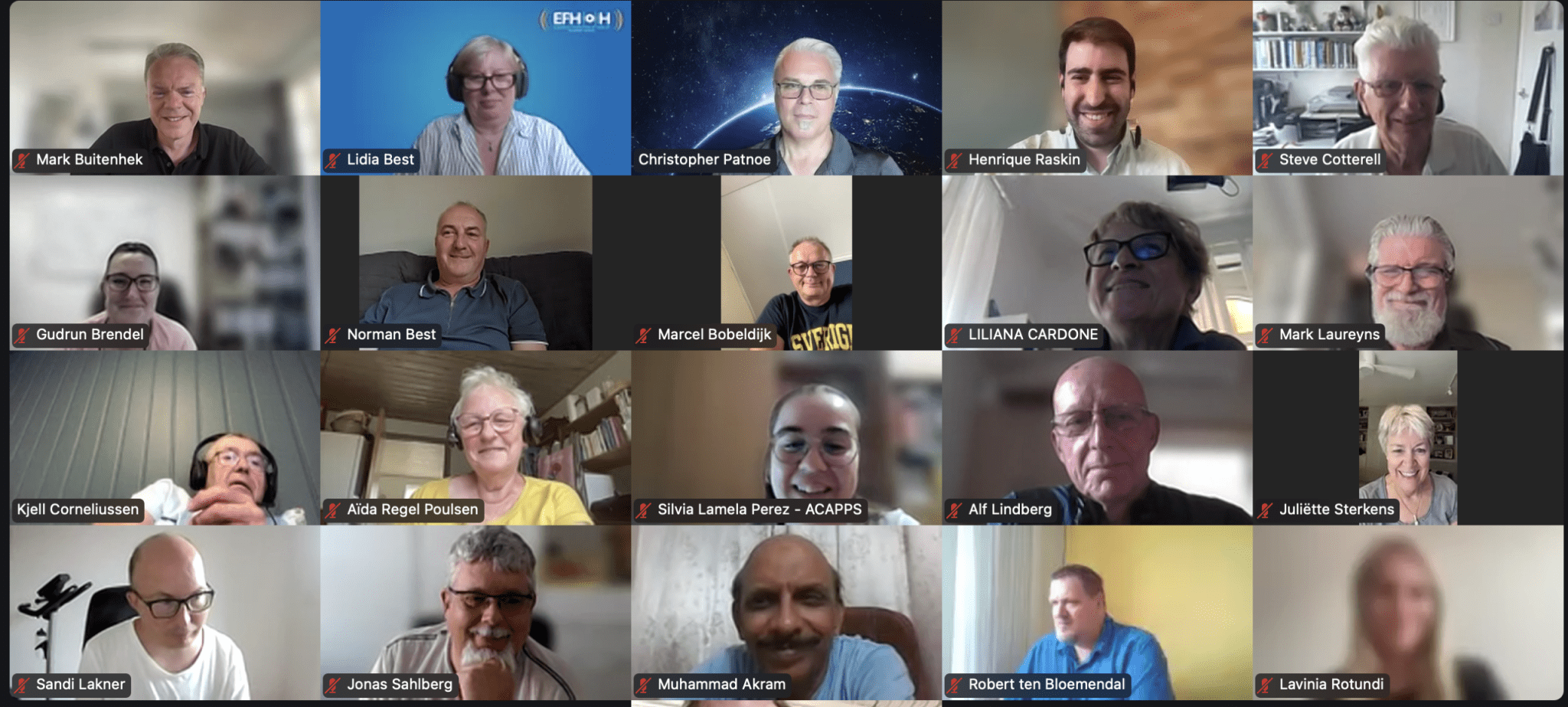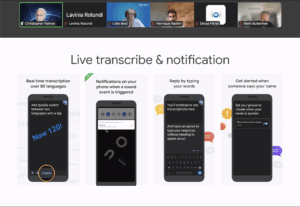
On 16 July 2025, EFHOH hosted the webinar “Exploring Google Accessibility Tools” featuring Christopher Patnoe, Head of Accessibility & Disability Innovation (EMEA) at Google, who explored how Google is building accessibility into its products for deaf and hard of hearing users.
The session brought together advocates and community members from across Europe to learn about available tools that improve communication access and digital inclusion for hard of hearing users. Christopher Patnoe guided participants through both the features currently available on Android and Google platforms, as well as upcoming innovations that aim to remove everyday barriers.
Here is a closer look at how these tools work and how to start using them:
Live Transcribe
Live Transcribe turns spoken words into real-time text on your phone screen, making face-to-face conversations more accessible, whether in meetings, classrooms, healthcare settings, or everyday interactions. The app supports over 80 languages and dialects, and includes a built-in keyboard for typing responses if needed.
How to use it: Download the Live Transcribe & Sound Notifications app from the Google Play Store. Once opened, it starts transcribing automatically when it detects speech.
Live Caption (Android)
Live Caption instantly adds captions to any audio or video content playing on your device, including YouTube, video calls, podcasts, voice notes, and even phone calls. This feature works system-wide and requires no internet connection. It is built into many newer Android phones.
How to use it: Go to Settings > Accessibility > Live Caption and switch it on. You can also enable it quickly via the volume control shortcut while playing media. You can find more information on how to activate this tool here.
Sound Notifications
Sound Notifications provide visual and vibration alerts when important sounds happen nearby, like smoke alarms, doorbells, or kitchen timers.
How to use it: Once you have downloaded the Live Transcribe & Sound Notifications app, open the Sound Notifications section, grant the necessary permissions, and choose which sound alerts you’d like to activate.
Google Meet Captions
Google Meet offers free, high-quality live captions in more than 25 languages, with the option to turn on real-time translation between languages. Users can also customize the caption size, color, and background to match their visibility needs.
How to use it: In a Google Meet call, click the “CC” icon at the bottom of the screen to enable captions. For translations, go to Settings > Captions > Translation Language.
Check how to customize captions here.
What’s Coming Next
In addition to showcasing existing tools, Christopher Patnoe also gave participants a glimpse into what’s ahead in Google’s accessibility roadmap:
- Caption-enabled smart glasses, designed to display real-time subtitles during in-person conversation.
- Improved Bluetooth support for hearing aids, enabling better connectivity and clear audio.
- SignGemma, Google’s open-source model for training AI sign language avatars in national sign languages.
Christopher also addressed concerns about the role of AI in accessibility, stressing that these technologies are built to assist, not replace, human interpreters and professionals. The goal is not to substitute human expertise, but to expand access and flexibility for users in real-world settings.
This webinar reinforced how thoughtfully designed, user-driven tools can make a meaningful difference in daily life for deaf and hard of hearing people. From live captioning and sound alerts to customisable meeting access and future innovations, these tools show what is possible when accessibility is built in, not added on.
EFHOH sincerely thanks Christopher Patnoe for his insightful contribution and looks forward to continuing the dialogue with Google and with the community on advancing accessibility across Europe.
If you are a non-profit organization, check if you qualify for Google for Nonprofits and how to get Google Workspace for Nonprofits here.
To stay updated, check the latest Google Accessibility News and sign up for the Google Accessibility Newsletter.





